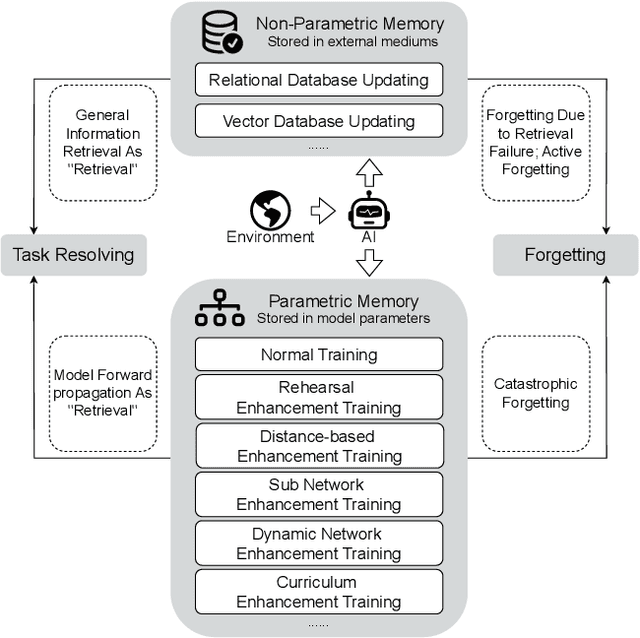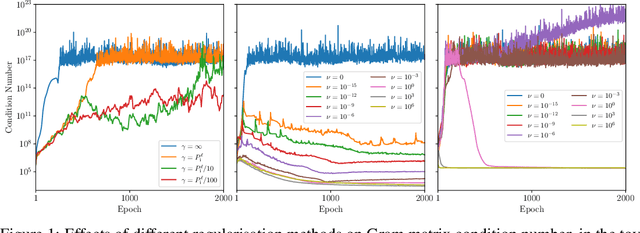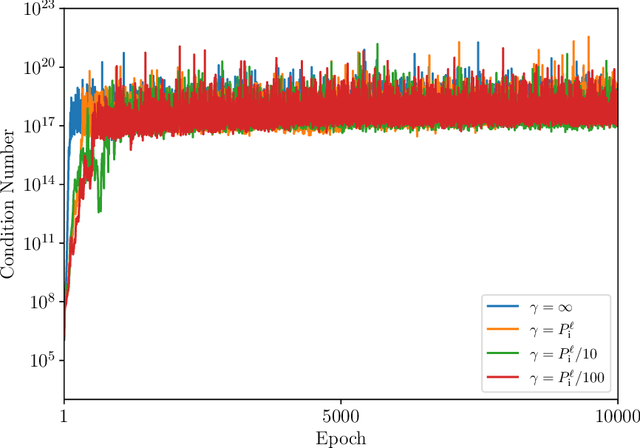Laurence Aitchison
Scale-invariant Attention
May 20, 2025Abstract:One persistent challenge in LLM research is the development of attention mechanisms that are able to generalise from training on shorter contexts to inference on longer contexts. We propose two conditions that we expect all effective long context attention mechanisms to have: scale-invariant total attention, and scale-invariant attention sparsity. Under a Gaussian assumption, we show that a simple position-dependent transformation of the attention logits is sufficient for these conditions to hold. Experimentally we find that the resulting scale-invariant attention scheme gives considerable benefits in terms of validation loss when zero-shot generalising from training on short contexts to validation on longer contexts, and is effective at long-context retrieval.
A Self-Improving Coding Agent
Apr 21, 2025Abstract:We demonstrate that an LLM coding agent, equipped with basic coding tools, can autonomously edit itself, and thereby improve its performance on benchmark tasks. We find performance gains from 17% to 53% on a random subset of SWE Bench Verified, with additional performance gains on LiveCodeBench, as well as synthetically generated agent benchmarks. Our work represents an advancement in the automated and open-ended design of agentic systems, and provides a reference agent framework for those seeking to post-train LLMs on tool use and other agentic tasks.
Massively Parallel Expectation Maximization For Approximate Posteriors
Mar 11, 2025Abstract:Bayesian inference for hierarchical models can be very challenging. MCMC methods have difficulty scaling to large models with many observations and latent variables. While variational inference (VI) and reweighted wake-sleep (RWS) can be more scalable, they are gradient-based methods and so often require many iterations to converge. Our key insight was that modern massively parallel importance weighting methods (Bowyer et al., 2024) give fast and accurate posterior moment estimates, and we can use these moment estimates to rapidly learn an approximate posterior. Specifically, we propose using expectation maximization to fit the approximate posterior, which we call QEM. The expectation step involves computing the posterior moments using high-quality massively parallel estimates from Bowyer et al. (2024). The maximization step involves fitting the approximate posterior using these moments, which can be done straightforwardly for simple approximate posteriors such as Gaussian, Gamma, Beta, Dirichlet, Binomial, Multinomial, Categorical, etc. (or combinations thereof). We show that QEM is faster than state-of-the-art, massively parallel variants of RWS and VI, and is invariant to reparameterizations of the model that dramatically slow down gradient based methods.
Position: Don't use the CLT in LLM evals with fewer than a few hundred datapoints
Mar 04, 2025Abstract:Rigorous statistical evaluations of large language models (LLMs), including valid error bars and significance testing, are essential for meaningful and reliable performance assessment. Currently, when such statistical measures are reported, they typically rely on the Central Limit Theorem (CLT). In this position paper, we argue that while CLT-based methods for uncertainty quantification are appropriate when benchmarks consist of thousands of examples, they fail to provide adequate uncertainty estimates for LLM evaluations that rely on smaller, highly specialized benchmarks. In these small-data settings, we demonstrate that CLT-based methods perform very poorly, usually dramatically underestimating uncertainty (i.e. producing error bars that are too small). We give recommendations for alternative frequentist and Bayesian methods that are both easy to implement and more appropriate in these increasingly common scenarios. We provide a simple Python library for these Bayesian methods at https://github.com/sambowyer/bayes_evals .
Jacobian Sparse Autoencoders: Sparsify Computations, Not Just Activations
Feb 25, 2025



Abstract:Sparse autoencoders (SAEs) have been successfully used to discover sparse and human-interpretable representations of the latent activations of LLMs. However, we would ultimately like to understand the computations performed by LLMs and not just their representations. The extent to which SAEs can help us understand computations is unclear because they are not designed to "sparsify" computations in any sense, only latent activations. To solve this, we propose Jacobian SAEs (JSAEs), which yield not only sparsity in the input and output activations of a given model component but also sparsity in the computation (formally, the Jacobian) connecting them. With a na\"ive implementation, the Jacobians in LLMs would be computationally intractable due to their size. One key technical contribution is thus finding an efficient way of computing Jacobians in this setup. We find that JSAEs extract a relatively large degree of computational sparsity while preserving downstream LLM performance approximately as well as traditional SAEs. We also show that Jacobians are a reasonable proxy for computational sparsity because MLPs are approximately linear when rewritten in the JSAE basis. Lastly, we show that JSAEs achieve a greater degree of computational sparsity on pre-trained LLMs than on the equivalent randomized LLM. This shows that the sparsity of the computational graph appears to be a property that LLMs learn through training, and suggests that JSAEs might be more suitable for understanding learned transformer computations than standard SAEs.
Function-Space Learning Rates
Feb 24, 2025



Abstract:We consider layerwise function-space learning rates, which measure the magnitude of the change in a neural network's output function in response to an update to a parameter tensor. This contrasts with traditional learning rates, which describe the magnitude of changes in parameter space. We develop efficient methods to measure and set function-space learning rates in arbitrary neural networks, requiring only minimal computational overhead through a few additional backward passes that can be performed at the start of, or periodically during, training. We demonstrate two key applications: (1) analysing the dynamics of standard neural network optimisers in function space, rather than parameter space, and (2) introducing FLeRM (Function-space Learning Rate Matching), a novel approach to hyperparameter transfer across model scales. FLeRM records function-space learning rates while training a small, cheap base model, then automatically adjusts parameter-space layerwise learning rates when training larger models to maintain consistent function-space updates. FLeRM gives hyperparameter transfer across model width, depth, initialisation scale, and LoRA rank in various architectures including MLPs with residual connections and transformers with different layer normalisation schemes.
Sparse Autoencoders Can Interpret Randomly Initialized Transformers
Jan 29, 2025Abstract:Sparse autoencoders (SAEs) are an increasingly popular technique for interpreting the internal representations of transformers. In this paper, we apply SAEs to 'interpret' random transformers, i.e., transformers where the parameters are sampled IID from a Gaussian rather than trained on text data. We find that random and trained transformers produce similarly interpretable SAE latents, and we confirm this finding quantitatively using an open-source auto-interpretability pipeline. Further, we find that SAE quality metrics are broadly similar for random and trained transformers. We find that these results hold across model sizes and layers. We discuss a number of number interesting questions that this work raises for the use of SAEs and auto-interpretability in the context of mechanistic interpretability.
Why you don't overfit, and don't need Bayes if you only train for one epoch
Nov 19, 2024Abstract:Here, we show that in the data-rich setting where you only train on each datapoint once (or equivalently, you only train for one epoch), standard "maximum likelihood" training optimizes the true data generating process (DGP) loss, which is equivalent to the test loss. Further, we show that the Bayesian model average optimizes the same objective, albeit while taking the expectation over uncertainty induced by finite data. As standard maximum likelihood training in the single-epoch setting optimizes the same objective as Bayesian inference, we argue that we do not expect Bayesian inference to offer any advantages in terms of overfitting or calibration in these settings. This explains the diminishing importance of Bayes in areas such as LLMs, which are often trained with one (or very few) epochs.
Human-inspired Perspectives: A Survey on AI Long-term Memory
Nov 01, 2024



Abstract:With the rapid advancement of AI systems, their abilities to store, retrieve, and utilize information over the long term - referred to as long-term memory - have become increasingly significant. These capabilities are crucial for enhancing the performance of AI systems across a wide range of tasks. However, there is currently no comprehensive survey that systematically investigates AI's long-term memory capabilities, formulates a theoretical framework, and inspires the development of next-generation AI long-term memory systems. This paper begins by systematically introducing the mechanisms of human long-term memory, then explores AI long-term memory mechanisms, establishing a mapping between the two. Based on the mapping relationships identified, we extend the current cognitive architectures and propose the Cognitive Architecture of Self-Adaptive Long-term Memory (SALM). SALM provides a theoretical framework for the practice of AI long-term memory and holds potential for guiding the creation of next-generation long-term memory driven AI systems. Finally, we delve into the future directions and application prospects of AI long-term memory.
Stochastic Kernel Regularisation Improves Generalisation in Deep Kernel Machines
Oct 08, 2024



Abstract:Recent work developed convolutional deep kernel machines, achieving 92.7% test accuracy on CIFAR-10 using a ResNet-inspired architecture, which is SOTA for kernel methods. However, this still lags behind neural networks, which easily achieve over 94% test accuracy with similar architectures. In this work we introduce several modifications to improve the convolutional deep kernel machine's generalisation, including stochastic kernel regularisation, which adds noise to the learned Gram matrices during training. The resulting model achieves 94.5% test accuracy on CIFAR-10. This finding has important theoretical and practical implications, as it demonstrates that the ability to perform well on complex tasks like image classification is not unique to neural networks. Instead, other approaches including deep kernel methods can achieve excellent performance on such tasks, as long as they have the capacity to learn representations from data.
 Add to Chrome
Add to Chrome Add to Firefox
Add to Firefox Add to Edge
Add to Edge